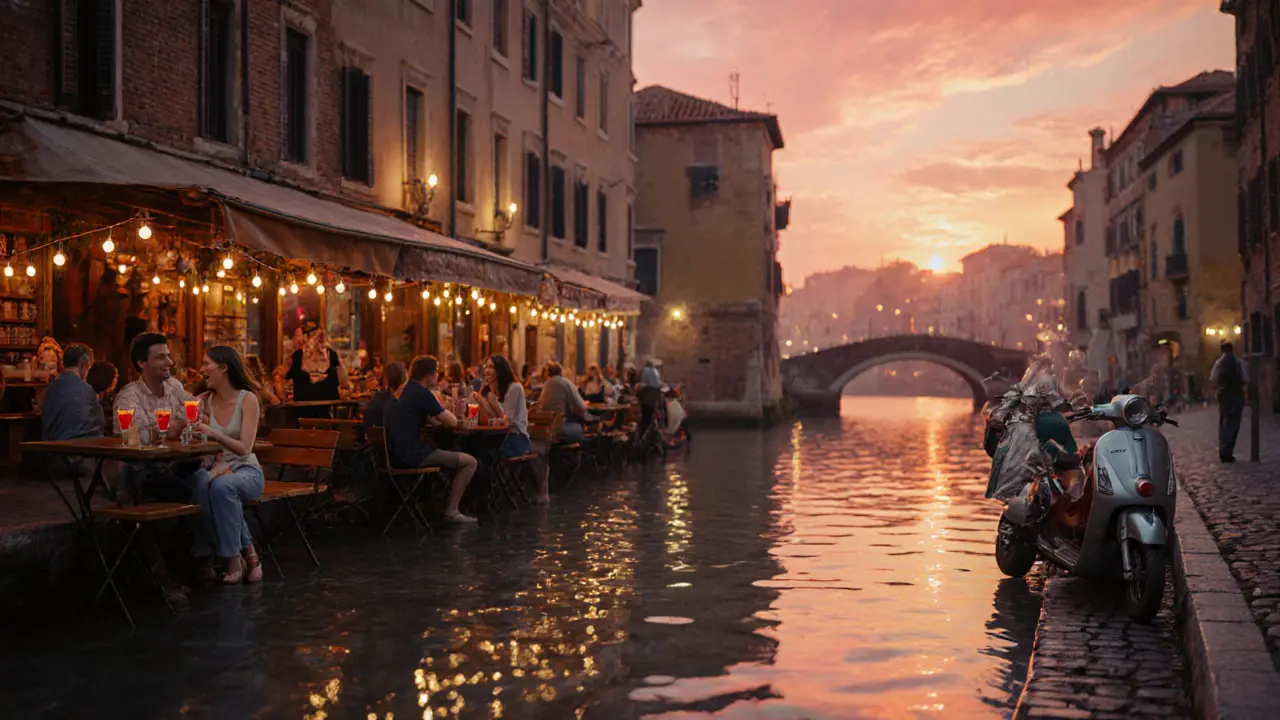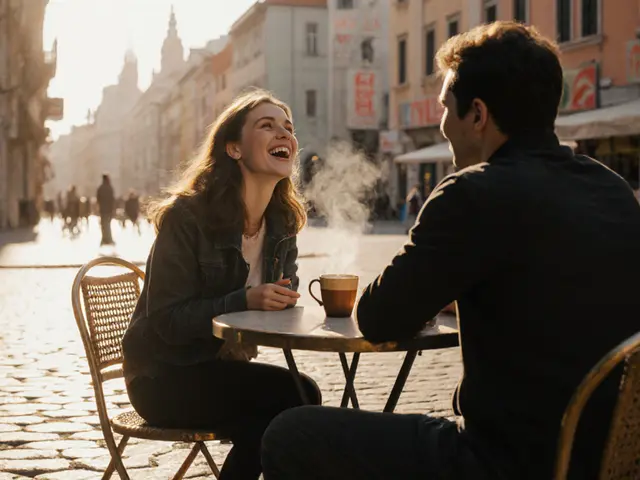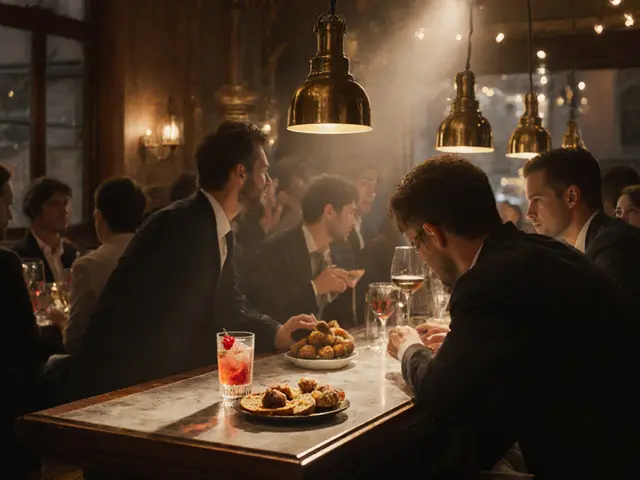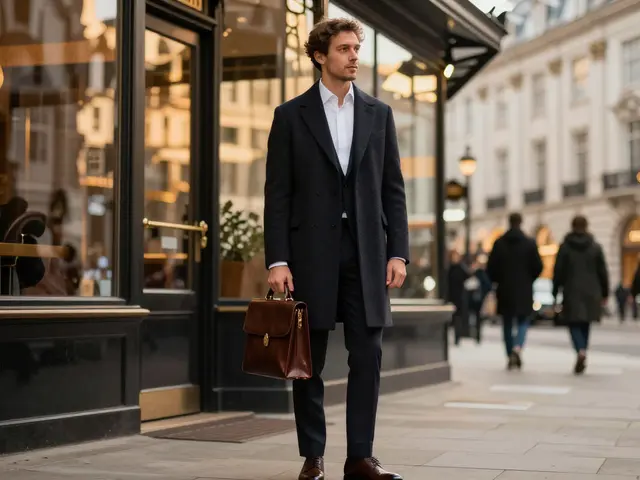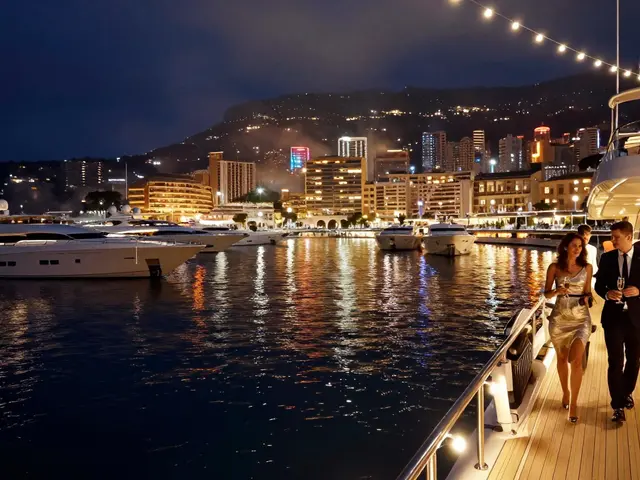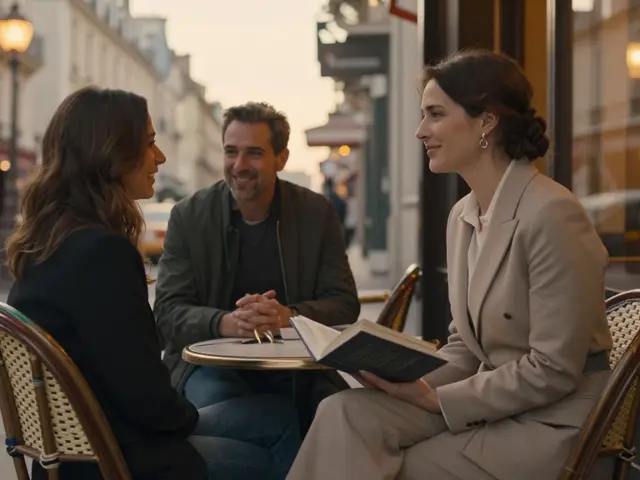When the sun sets over Milan’s sleek piazzas and designer storefronts, the city doesn’t shut down-it transforms. This isn’t just a place where fashion shows happen during the day. At night, Milan becomes a living, breathing party with a sense of style you won’t find anywhere else. Forget the clichés about Italian nightlife being all about loud clubs and late dinners. Milan’s after-dark scene is layered, diverse, and quietly sophisticated. You can sip craft cocktails in a hidden speakeasy, dance to underground techno in a converted warehouse, or sip Aperol spritzes by the canal as locals laugh over plates of cicchetti. Here are the top 10 spots that define Milan nights in 2025.
Navigli District: Canals and Cocktails
The Navigli canals are Milan’s most picturesque nightlife stretch, especially on weekends. Once a working waterway for transporting goods, today it’s lined with open-air bars, vintage shops, and food stalls. Start at Bar Basso, the legendary home of the Negroni Sbagliato, where the drink was invented in 1980. The bar’s red leather booths and dim lighting feel like stepping into a 1970s Italian film. Walk a few blocks to La Bitta, a local favorite with a rotating selection of natural wines and small plates of cured meats. Don’t miss the weekend street parties where music spills from doorways and people dance barefoot on cobblestones. Locals say if you haven’t had an Aperol spritz here at sunset, you haven’t really experienced Milan.
Brera: Bohemian Charm Meets High End
Brera is where Milan’s artists, designers, and intellectuals unwind. The streets are narrow, the lights are low, and the vibe is effortlessly cool. Bar Basso is here too, but the real gem is La Permanente, a tiny cocktail bar tucked behind a bookshop. The mixologists know your name by the third visit. Order the Brera Sour-a blend of gin, elderflower, and lemon that tastes like spring in a glass. If you’re feeling bold, head to Club 21, a members-only spot with velvet curtains and a jazz band that plays only on Thursdays. You don’t need a membership if you know someone. If you don’t? Show up early, order a drink, and wait. Someone will invite you in.
Porta Venezia: The City’s Queer Heart
Porta Venezia is Milan’s most colorful and inclusive neighborhood. This area thrives after dark, with rainbow flags hanging from balconies and music that blends house, disco, and Latin beats. Bar Pazzo is the go-to for drag shows every Friday. The performers are local talent, not imported stars, and the energy is electric. For something quieter, try Le Cantine del Vino, a wine bar with over 200 labels from small Italian producers. The owner, Luca, will tell you the story behind each bottle. On Saturday nights, Paradiso opens its doors-a converted 19th-century theater turned into a dance club with a rooftop terrace. It’s not flashy, but it’s authentic. You’ll find students, artists, and retirees all dancing side by side.
Corso Como: Where Fashion Meets Nightlife
Corso Como 10 is more than a bar-it’s a cultural hub. Originally a showroom for fashion designers, it’s now a multi-level space with a restaurant, a record store, and a rooftop bar. The bar on the top floor, Corso Como 10 Rooftop, offers panoramic views of the city skyline. The DJ spins vinyl-only sets from midnight to 2 a.m., and the crowd? Mostly fashion insiders, photographers, and influencers who actually know music. The cocktails are expensive, but the atmosphere is priceless. If you want to see Milan’s elite in their natural habitat, this is the place. Arrive before 11 p.m. or you’ll wait an hour just to get in.
Isola: Industrial Cool in the New Hotspot
Isola used to be a forgotten industrial zone. Now, it’s where Milan’s younger crowd goes to escape the tourist traps. The area is full of converted factories turned into bars and galleries. Bar Basso isn’t here-but La Banda is. It’s a no-frills dive bar with cheap beer, mismatched chairs, and a jukebox full of 80s Italian pop. On weekends, Ex Dogana takes over the old customs building with live electronic music and art installations. The crowd here doesn’t care about brands or labels. They care about the beat. If you’re looking for raw, unfiltered Milan nightlife, this is it. Bring cash. Most places don’t take cards after midnight.
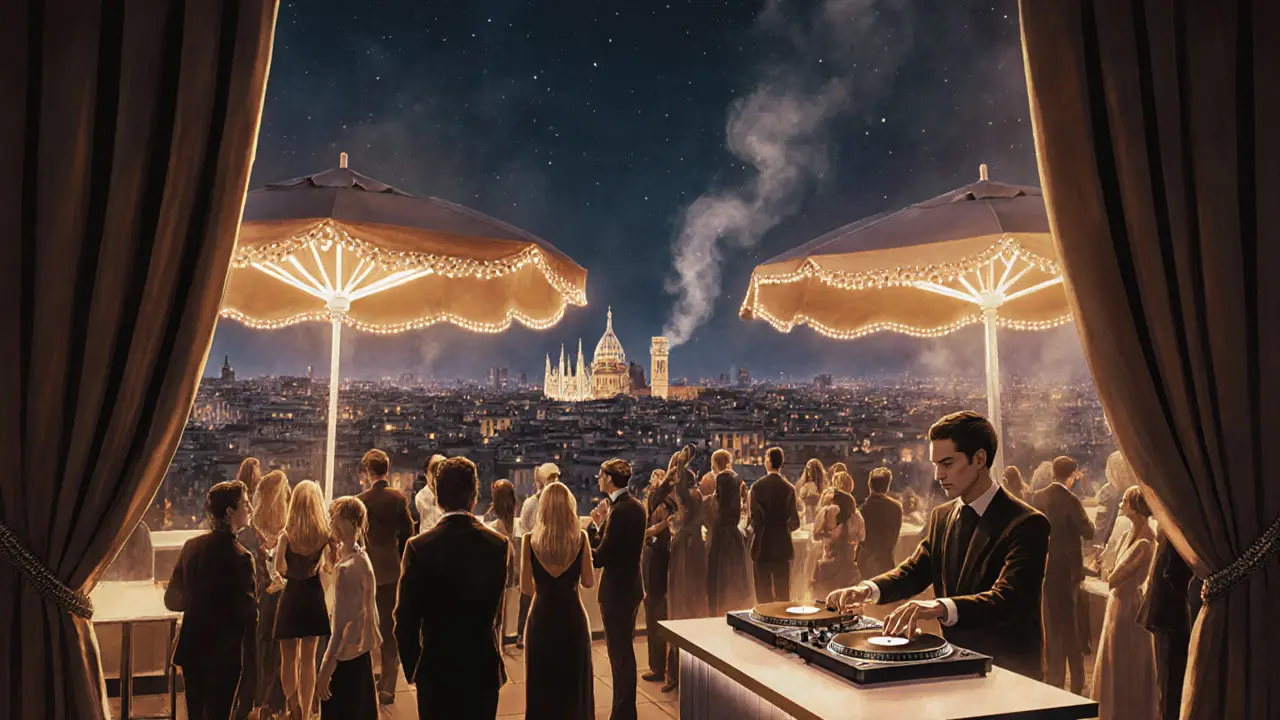
San Babila: The Classic Night Out
San Babila is where Milan’s older generation still goes out. It’s elegant, quiet, and full of history. Bar Campari is a landmark since 1934. The marble counters, the wooden stools, the waiters in suits-it’s like time stopped here. Order a Campari Soda and watch the city’s old-money crowd sip quietly. If you want to dance, Le Jardin is the only club in the area that stays open past 2 a.m. It’s not loud, but the music is smooth-jazz, soul, and French chanson. The dress code is smart casual. No sneakers. No hoodies. If you show up looking like you just got off the plane, you’ll be politely turned away.
Porta Ticinese: The Street Party Zone
Porta Ticinese is where the party spills onto the sidewalks. The street is packed with bars, each with its own vibe. Bar Luce is a cozy spot with a fireplace and a selection of Italian aperitifs. Il Gabbiano has outdoor tables and live acoustic music every night. But the real magic happens after 11 p.m., when the street transforms into a free-for-all. People bring their own drinks, set up speakers, and dance under string lights. There’s no official club, no cover charge, just music and movement. Locals call it “La Festa della Porta.” If you want to feel like part of the city-not just a visitor-this is where you belong.
Via Tortona: Design District After Dark
Via Tortona is known for design fairs during the day. At night, it becomes a playground for creatives. Bar Basso isn’t here-but La Cucina di Via Tortona is. It’s a hidden restaurant that turns into a cocktail bar at 9 p.m. The menu changes weekly based on what the chef finds at the market. The bar is run by a former bartender from Tokyo, and the drinks are minimalist but unforgettable. Try the Black Sesame Old Fashioned. On Fridays, the courtyard fills with artists, architects, and writers who come to talk, not to drink. It’s the quietest party in Milan-but also the most memorable.
Centro Storico: The Hidden Speakeasies
Behind unmarked doors and fake bookshelves, Milan’s best-kept secrets live. Bar Basso is not the only one. Il Gatto Nero is a speakeasy hidden inside a tailor’s shop. You need a password-ask for it at the bar across the street. Inside, it’s dim, warm, and packed with leather-bound books. The cocktails are made with house-infused spirits and served in vintage glassware. La Bottega del Cocktail is another. It’s tiny, with only six stools, and the bartender doesn’t speak English. But he knows exactly what you want before you say it. These places don’t advertise. You find them by word of mouth. And that’s how it should be.
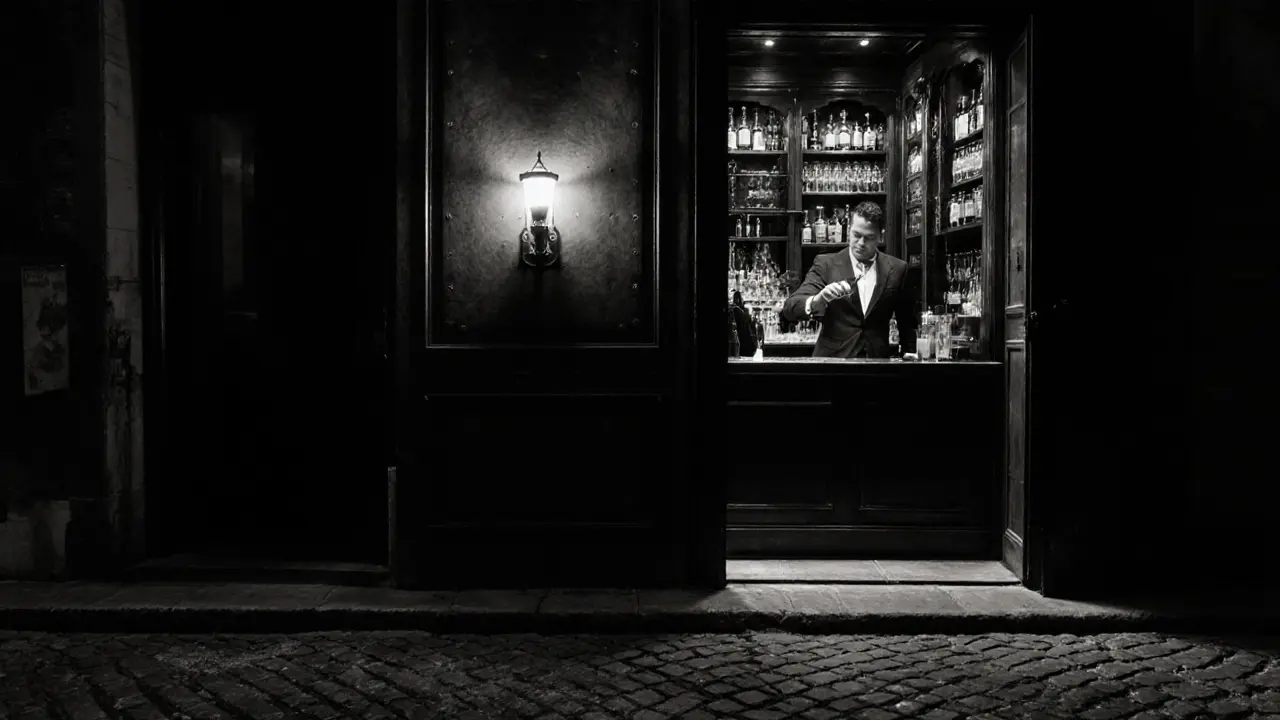
San Siro: For the Football Fans
If you’re in Milan on a match night, the city belongs to the fans. San Siro isn’t just a stadium-it’s a neighborhood that comes alive when AC Milan or Inter plays. The bars around the stadium, like Bar del Tifoso and Il Cantiere, fill up hours before kickoff. The beer flows, the scarves wave, and the chants start early. Even if you don’t care about football, the energy is contagious. After the match, the party moves to La Pergola, a rooftop bar with views of the stadium lights. The staff knows the score before the game even starts. They’ll toast with you whether your team won or lost. It’s the only place in Milan where strangers become friends over a shared passion.
What to Know Before You Go
Milan’s nightlife isn’t like Barcelona or Berlin. It’s quieter, more refined, and less about quantity than quality. Most bars close by 2 a.m., and clubs by 3. The dress code matters-even in casual spots, no flip-flops or gym clothes. Cash is still king after midnight. Many places don’t take cards. And if you want to get into the best spots, arrive early. The crowd here doesn’t wait for you. You wait for them.
Final Tip: Don’t Just Chase the Trend
The most memorable nights in Milan aren’t the ones you plan. They’re the ones you stumble into. Maybe it’s a bar you saw on a random corner, or a friend who says, “Come with me, I know a place.” That’s how locals do it. So put down the guidebook. Walk a little further. Listen to the music drifting from an alley. Say yes to the invitation you didn’t expect. That’s when you’ll find the real Milan.
What time do clubs in Milan usually close?
Most clubs in Milan close around 3 a.m., with some staying open until 4 a.m. on weekends. Bars typically shut down by 2 a.m., especially in quieter neighborhoods. Always check ahead-some places have special hours on holidays or during events like Milan Fashion Week.
Is Milan nightlife safe for tourists?
Yes, Milan’s nightlife is generally safe for tourists. Stick to well-lit areas, avoid overly crowded alleys late at night, and keep an eye on your belongings. The most popular districts like Navigli, Brera, and Porta Venezia are heavily patrolled. As with any big city, common sense goes a long way.
Do I need to book reservations for Milan bars?
For popular spots like Corso Como 10 Rooftop or La Bottega del Cocktail, booking ahead is smart-especially on weekends. For casual bars in Navigli or Porta Ticinese, walk-ins are fine. Speakeasies like Il Gatto Nero require a password or invitation, so ask your hotel or a local for details.
What’s the dress code for Milan nightlife?
Milan is stylish-even in casual spots. Avoid sportswear, flip-flops, or overly baggy clothes. Men should wear clean jeans or chinos with a button-down or polo. Women can opt for dresses, tailored pants, or stylish separates. At upscale venues like Corso Como, a jacket or blazer is appreciated. When in doubt, dress like you’re going to a nice dinner, not a concert.
Are there any free nightlife options in Milan?
Yes. Porta Ticinese turns into a free street party on weekends, with music and dancing in the open air. Many bars in Navigli offer free aperitivo buffets with your drink purchase after 6 p.m. Some galleries in Isola host free live music nights on Thursdays. You don’t need to spend a lot to have a great night out.
What’s the best night to go out in Milan?
Friday and Saturday are the busiest, but Tuesday and Wednesday nights are surprisingly lively in neighborhoods like Isola and Porta Venezia. You’ll find fewer crowds, better service, and sometimes free entry to clubs. If you want to experience the real local scene, skip the weekend rush.
Next Steps: Where to Go After Milan
If you’ve had your fill of Milan’s nightlife and still want more, consider a short train ride to Lake Como or Bologna. Lake Como has intimate wine bars with views of the water, while Bologna’s Trattorias turn into late-night music venues after midnight. But if you’re looking for the next big thing in Italian nightlife, keep an eye on Turin. It’s quieter, cheaper, and full of underground bars that feel like Milan did ten years ago.

